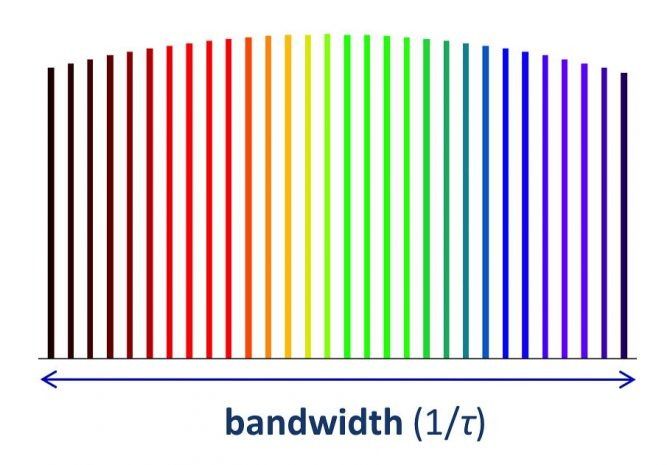You read correctly, a team of researchers managed to break all records at a speed of 661 terabits per second with a single fiber optic cable.
Everyone knows that fiber optic cables achieve much faster data transmission than conventional cables with greater stability and less interference, but the spectacular number of 661 terabits per second is really a performance. Today, the need for data collection is as high as it is shocking, which has led to a fierce search for ever higher speeds.
The Internet currently transmits hundreds of terabytes per second and consumes 9% of the world’s electricity, a figure that is growing between 20% and 30% per year. To support this brutal demand and to survive in global competition, several research teams are constantly developing new technologies, and it is precisely under this premise that scientists have developed a laser that emits light pulses by using different colors, which are separated at uniform frequency intervals and yields record data transmission rates.
The sensational development of this technology is based on the common principle of all optical fibers, i.e. the transmission of light beams of different colors by means of a laser pulse. However, in order to be able to transmit more data in a single optical fiber, this data is divided into different light colors, a factor known as wavelength division multiplexing. In addition, each color requires its own laser, which inevitably results in higher energy costs and increases with increasing bandwidth.
Since an ordinary laser does not produce many colors, the research team has worked to get more. The light passes through an extremely thin cable – about 300 nanometers in diameter – which is so small that it compresses the light and makes it very bright. This high intensity causes the material of which the cable is made to react with the generation of new colors, which follow the distance defined by the laser pulse. In this way, light pulses from thousands of high-purity colors come out of the cable, so that a single laser is able to produce the 80 colors required for the entire system with different wavelengths.
The light emitted by the laser is also divided into two polarizations (the orientation of the electric field during oscillation), so that each color provides two channels. The information can then be placed in four different time intervals by time division multiplexing and each color reaches a raw data rate of approximately 320 Gbps so that it reaches 25 Tbps with 80 colors.
The fiber carrying the signal consists of 30 light-guided cores surrounded by a single coating, and what does that mean? That each core manages to transport data at a speed of 25 Tbps, which theoretically corresponds to about 768 Tbps. However, since the data is always transmitted with a certain redundancy to allow error correction (so-called forward error correction), the actual data transmission rate is 661 Tbps, a speed that breaks all known datasets and opens a small window into a not so distant future.
